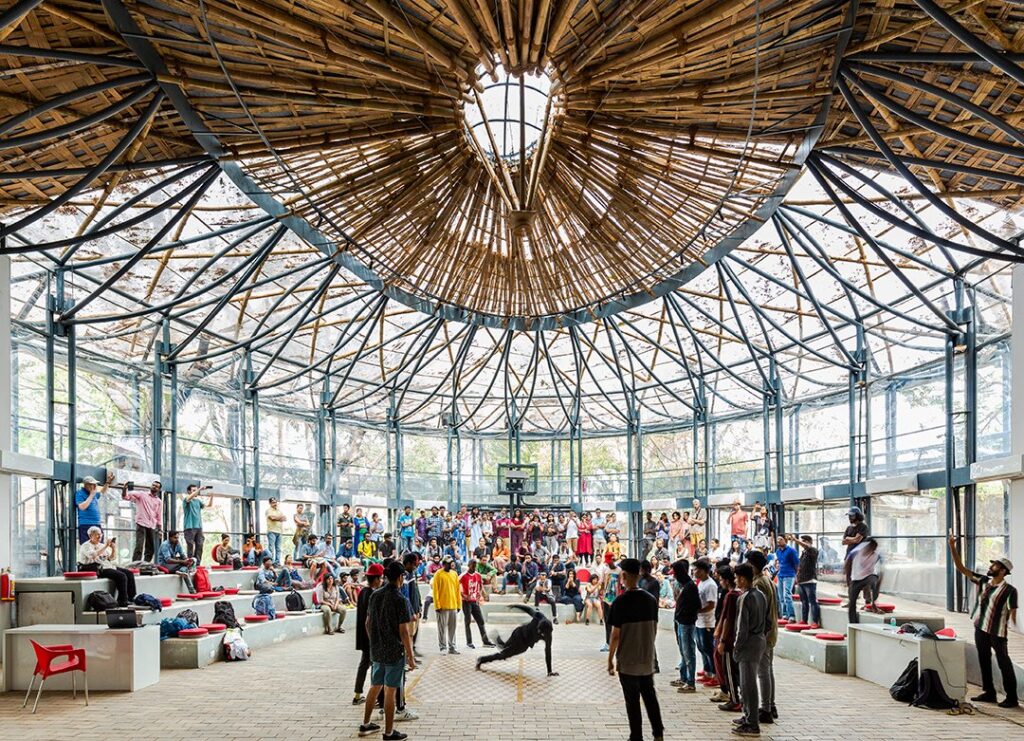In a captivating exploration of the world of architecture through the lens of Shruti Dimri, Principal at Anagram Architects, she delves into the origins of her architectural journey. From the intersections of creativity, attention to detail, and the art of crafting spaces that go beyond the conventional, Dimri shares her candid insights on navigating the challenges and rewards of architectural craftsmanship.
What initially inspired you to pursue a career in architecture, and are there specific individuals, experiences, or moments that influenced
this decision?
I don’t have a fantastical story. I come from a family where talking about aesthetics, art and culture, food, paintings, etc. was an everyday thing. There was an inclination towards arts in general, and design also. I remember this vividly, when I had to choose a path, everyone wanted to be an engineer, but I definitely did not want to do what everyone else was doing. From class nine, I did not think about anything else. Any decision I made thereafter was centred around my desire to be an architect. I also remember telling my relatives that I would design their houses one day.
How have these early inspirations shaped your perspective and approach to architecture throughout your career?
When you talk about aesthetics as a child and your parents also talk about it constantly, the most important value and way of thinking it instils is to not take anything as a rule. Question everything and do it for your joy. When you sit down to solve a problem, you have to first understand it well – is what has been posed to you the problem and is that the only thing you will solve? Sure, you can design a school with classrooms but are there other things you can do to increase the quality of the space even though it may not be required of you? I think that the flexibility to pay attention to the details while maintaining the big picture is an important quality.
How do you ensure that every project reflects your design philosophy, especially when it comes to attention to detail?
There is no linear process to it. You want to get to the end product and be sure that you have things detailed out and that the overall picture is together as well. As in a painting, I will go close, draw the details and step back to see where it falls in the larger context because it is easy to lose track of whether a certain detail is important or not. The zeal to detail should not bog you down. One way I keep track is by maintaining detailed presentations outlining the entire project. Also, have people around whom you can collaborate with.
With such a diverse portfolio, could you share a project, specifically in steel, that you found particularly challenging or rewarding?
I would like to mention the Koodaaram project for the Kochi-Muziris Biennale. The mandate was to build a structure where the performing arts can take place and after three months, it will be dismantled and cleared. It’s an interesting problem because you want for those three months to be weather-proof while being a large structure that can be easily dismantled. The ground also should not be affected much. Such profiles are very well-suited for using steel. We used hollow sections of MS. The roof is a combination of metal and bamboo. Instead of glass, we used acrylic sheets. It has also won a lot of recognitions.

What challenges have you encountered working with steel as a material?
We did a residential project in Delhi in steel and a farmhouse. While steel’s time advantage was key in the farmhouse project, erection was a challenge for the residence since it was a tiny space. What was an advantage in one project was a disadvantage in the other. We don’t have the skilled labour and have a shorter bank of contractors to choose from. In terms of cost as well, steel loses out. In a crematorium project, where the base will made of steel, we convinced the client to do something slightly different and go beyond the basic shed design. I don’t think I can convert a complete non-believer of design into a believer just by saying good design is better. There has to be some prior education and it is your job to identify such people. Sharing stats and examples definitely helps.
Your thoughts on parametric design? Any emerging technology that you are excited about?
Parametric design has been around for a long time. It can be considered halfway to Artificial Intelligence where you still have the parameters. Although, AI still has a long way to go – it is intelligent but it doesn’t know what to be intelligent about. We ask it to do something and it comes back with some bizarre options that are not practical. It is a learning process and we know that the more we do it, the better we’ll become at controlling the parameters.
How do you incorporate sustainable practices into your designs? With regards to steel, are there sustainable practices that you find noteworthy?
Unpopular opinion – Incorporating solar panels in the design is now a fad. The more you read about it, you realise it is not that sustainable. The overall carbon footprint is still more than conventional energy conservation methods. I find it interesting as an interim stage based on which something new can be done. I believe in the ‘reduce, reuse, and recycle’ principle. Build something that lasts decades if not a century. We are not in a sustainable profession; what we can do is minimise our impact on the environment. Being aware of the impact is going to be key. Steel is a great alternative, though it comes with its challenges. If all of the construction became metal, we would not have enough to build for everyone.





